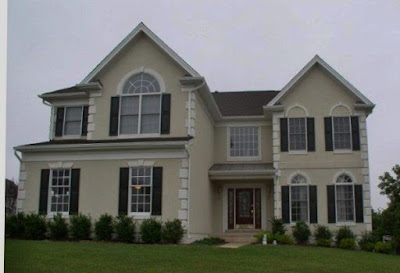Kim Kroner's New Weekly Article - Refined Dining || Home By Design
 | | |||||||||
 | | |||||||||
| | ||||||||||
 | | |||||||||
| | ||||||||||
| This dining room, full of Spanish-influenced details, is part of a larger open-concept room that includes the living room and gallery hall. “Shaba Derazi, [currently with Young & Meathe Custom Homes] was the project manager and his input and guidance were invaluable,” says Coleman. “He worked with me on many of the interior custom design features of the home.” The walls are drywall with a skim coat of plaster over them to resemble the original stucco walls of vintage Spanish construction. Painted a soft beige, they provide a subtle background for the contrasting deep wood and wrought iron accents. Four pecky cypress beams highlight the thirteen-foot ceiling in the entire great room area. Carved, heavy, ten-foot doors in the dining room are mahogany and were purchased through No Mas!, a company that designs and imports Mexican art objects. And Coleman says the doors to the left and right of the sideboard, were carved by a seventy-year-old Mexican woman. “All the other doors in the home were custom designed by William T. Baker and myself,” she says. “An example is the beautiful dark-wood-framed, glass-paned arched door leading to the courtyard from the dining area.” The wrought iron chandelier, well sized for the high ceilings, has a match in the living room area and both were sourced from California-based Arte de Mexico. The arched niche is a traditional architectural design element of the Spanish Colonial Revival style. The sideboard, a rich dark wood that is typical of the style, was purchased in an antique store and nests perfectly in the space. The mirror above was custom-made. Two sconces, which also appear in other areas of the home, are reminiscent of early Spanish candleholders. And the tile floors throughout the entire dining room, living room, and gallery hallway are travertine with chiseled edges. The dining room table is a double pedestal table that the owners brought with them to this home, but the antique wooden chairs were purchased separately. “The host and hostess chairs were designed and upholstered in fabric from Lewis & Sheron Textiles by my upholsterer, Miquel Moreno of Custom Slipcover & Upholstery,” says Coleman. “They add a soft and plush feel to the dining area.” Baker says that the owners wanted a dressy-casual family home that would fit their lifestyle. “They wanted the home to be comfortable for when it was just the two of them, and to function perfectly when it was full of family or friends, or when they hosted a major corporate event,” he explains. “The Spanish Colonial Revival style lends itself well to all of these needs. From relaxing and casual to formal or elegant, the design is exactly suited to what the Colemans were looking for.” | | |||||||||
 | | |||||||||
| | ||||||||||
| | ||||||||||
 | | |||||||||
| | | | | | | | | | | |

DECEMBER | JANUARY 2014
Written by Carolyn M. Runyon
Photography By Scott Moore Photography
Photography By Scott Moore Photography
A Modern Home with Old-World Ambience
Sharon Coleman was raised in Southern California and always had a deep love of Spanish-influenced architecture. When she moved to Atlanta, Georgia and decided to make it her permanent home, she wanted to design and build a house that was reminiscent of the homes she grew up with on the West Coast. Coleman and her husband researched styles with dominant Spanish features and found that in early twentieth-century America, George Washington Smith, an architect, was the “father” of the style home they loved—Spanish Colonial Revival.
This style of home became popular in California during the 1920s following their display in the 1915 Panama-California Exposition. The homes were a catalog of styles unified by the use of arches, courtyards, plain stucco or plaster walls, and tile roofs—all derived from the Mediterranean world of architecture. The new style was named Spanish Colonial Revival and was in abundant demand until the Great Depression.
The Spanish Colonial Revival style had been enthusiastically adopted by Santa Barbara, California, so the Colemans traveled there to complete their research. They took photos and studied exterior and interior features. Soon afterward, Coleman consulted with Leah Bailey, ASID, then lead designer of Atlanta-based Pineapple House Interior Design, and with architect William T. Baker of Atlanta-based William T. Baker and Associates, who helped her realize her dream for the entire 12,000-square-foot home. According to Baker, the owners wanted an old-world feel throughout the house. “Special arched openings and hand-carved wood doors lend a feel of centuries to this new-construction house,” he explains. “Many of the accents and furnishings look as though they could be from an original villa in Madrid.”

The Spanish Colonial Revival Style emphasizes many Spanish-influenced details. Arches, stucco surfaces, built-in niches and alcoves, intricately carved dark woods, wrought iron accents, and tile are among the most prominent.





As featured in
Home By Design
Information deemed reliable but not guaranteed.
All measurements are approximate.
Copyright 2014 Network Communications Inc.
All rights reserved.
All rights reserved.



Comments
Post a Comment